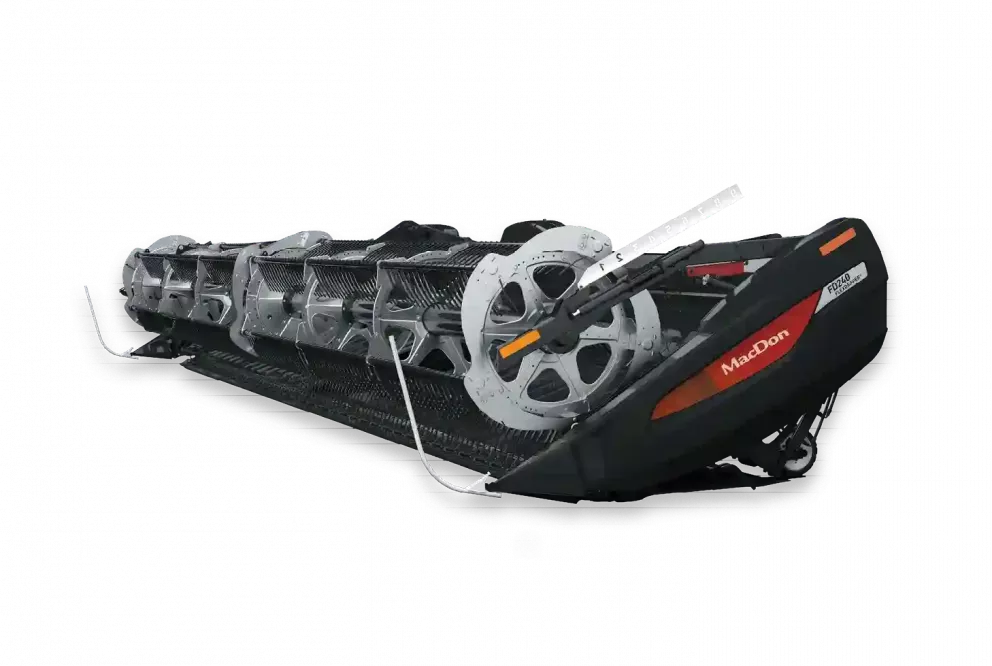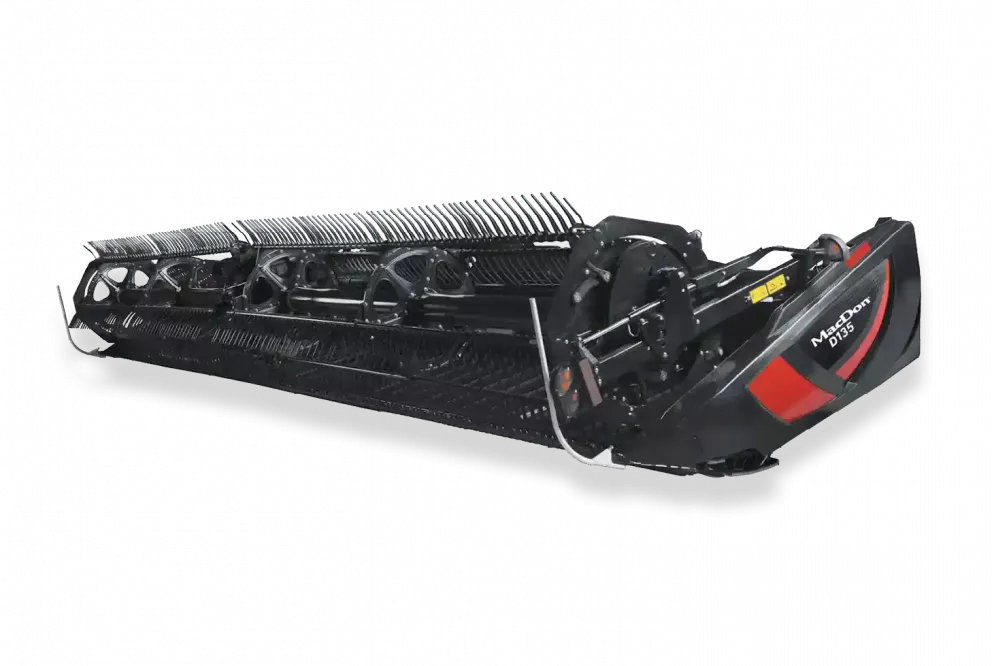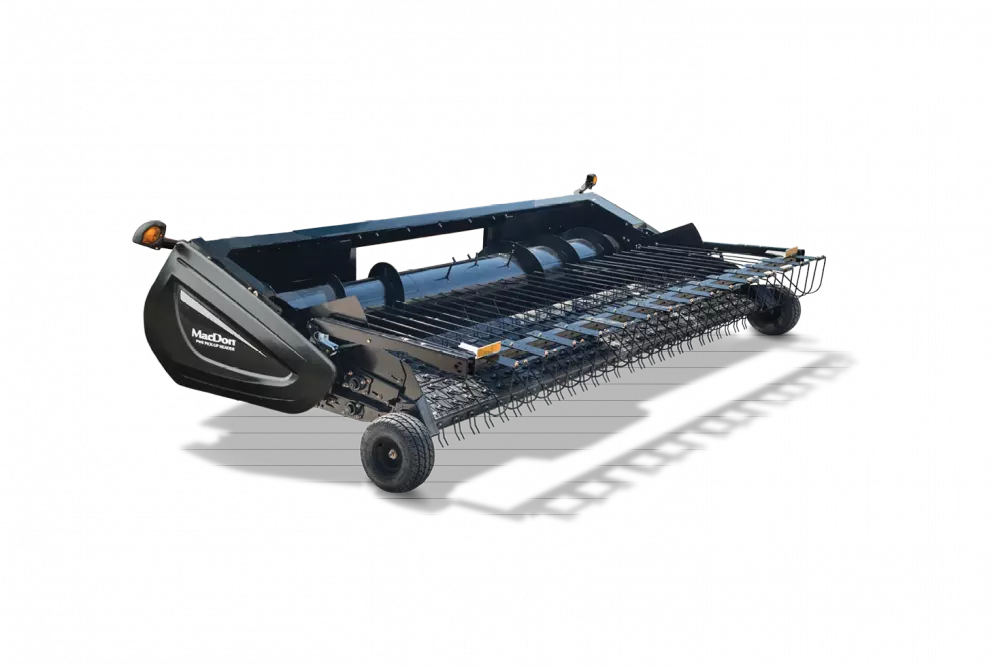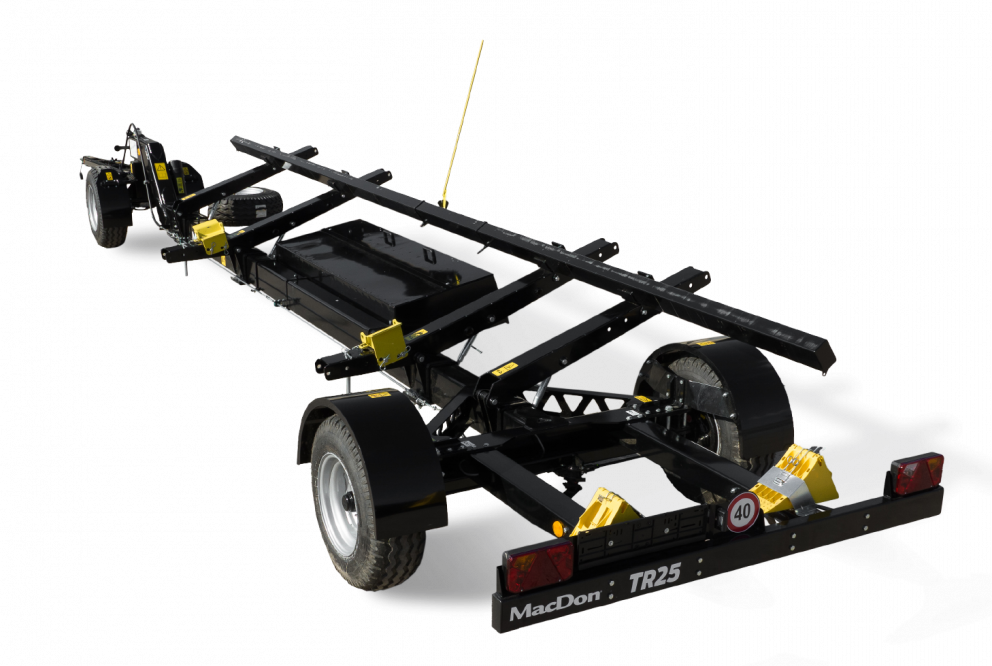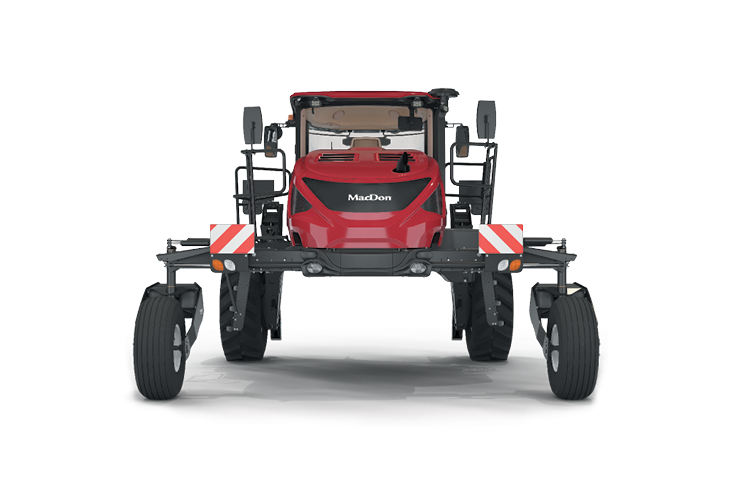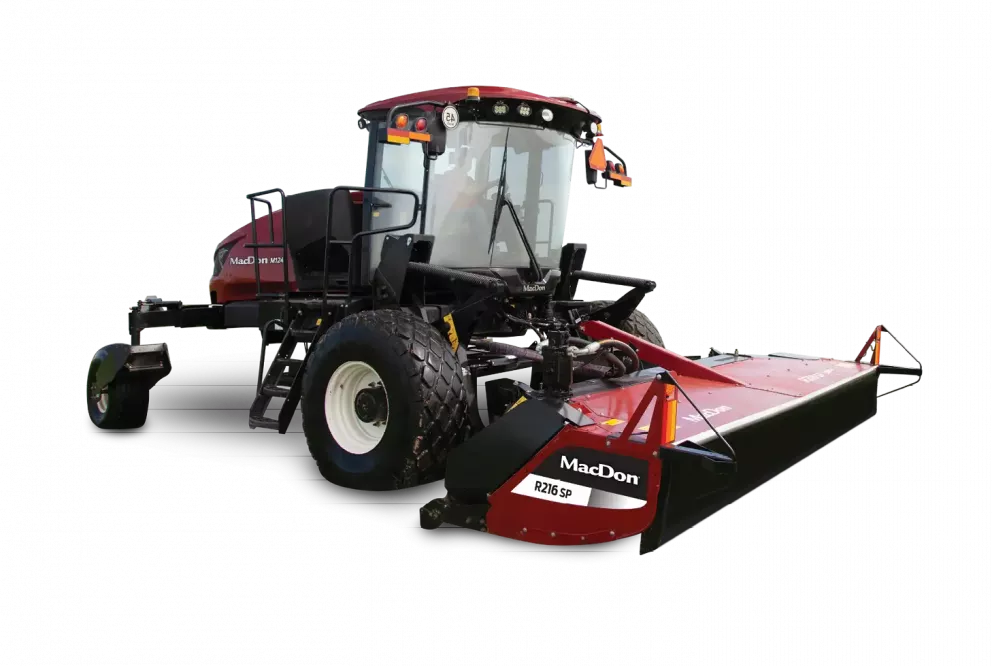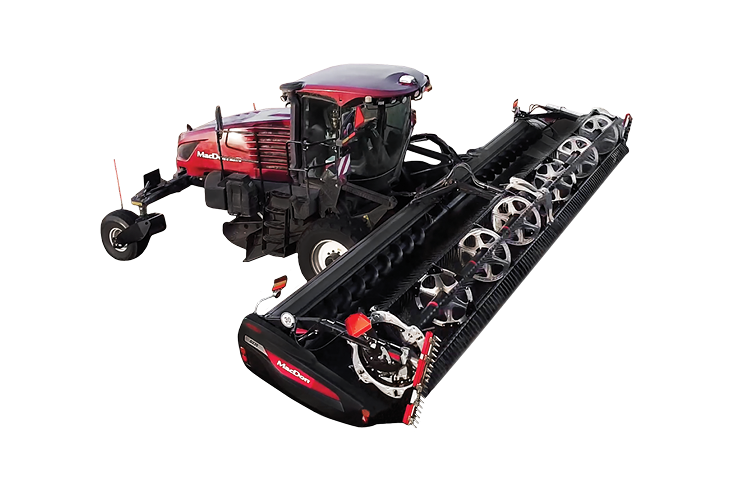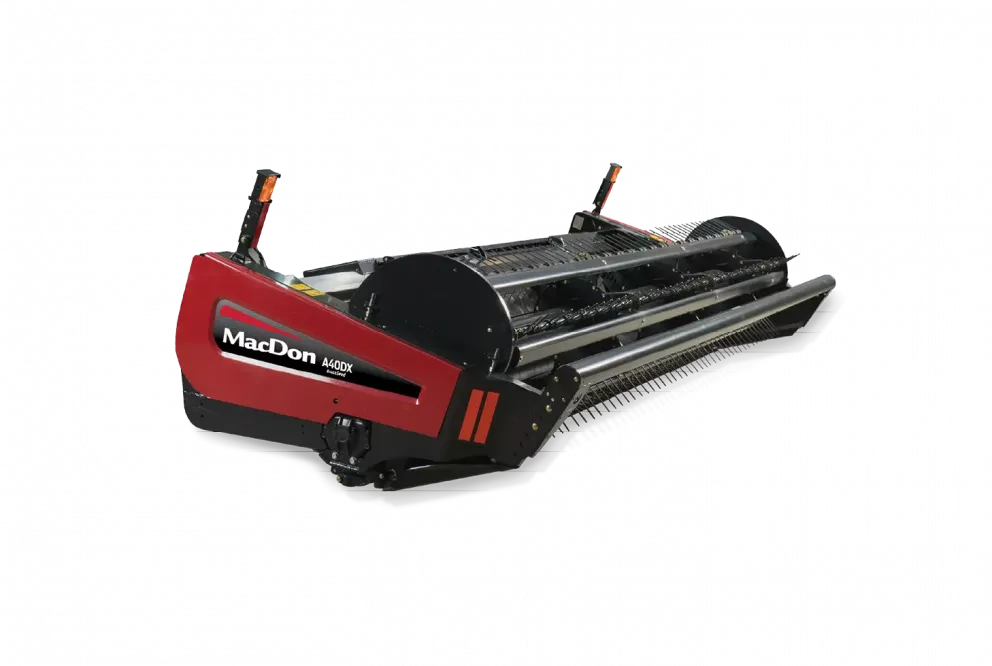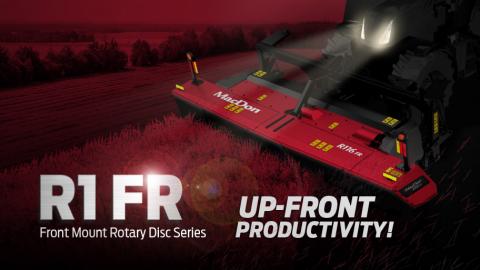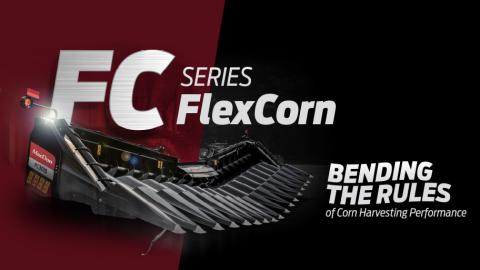Super-size it
MacDon flex and rigid drapers are letting producers take their larger combines to the max.
FOR BEING 40 FEET WIDE YOU’D THINK YOU WOULDN’T BE ABLE TO HUG THE CONTOUR OF THE GROUND, BUT IT DOESN’T JUST HUG THE GROUND, IT SHAVES IT.
Suddenly everything in agriculture seems to be super-sized; the farms, the tractors and especially the combines, which have grown by several magnitudes to meet the need for producers to be more productive.
Unfortunately, many producers who have upgraded to larger combines are not receiving the full productivity gains that they were hoping for, due to the crop feeding limits of the traditional auger headers they have mounted on them. This is why many producers are now specifying MacDon draper headers for their combines – both D Series Rigid Drapers and FD Series FlexDrapers.
Not only do MacDon drapers allow most producers to move up in header size, while operating at the same or higher ground speeds as a shorter auger platform, but these producers are also experiencing other significant benefits for their operation.
Take for example the experience of Tim McGrady of Hillsboro, Indiana, who runs a 40 foot FD70 FlexDraper® on his John Deere 9760 and estimates that he is gaining at least a bushel an acre increase in soybeans recovered. He says that this is due to the smooth, even feeding of the FD70 which helps reduce shatter loss.
“We just don’t have the bunch feeding anymore,” says McGrady. “We’re also able to follow the contours better with this 40 foot FlexDraper. We had a 35 foot flex platform before, and the 40 foot MacDon cuts beans off closer to the ground and follows the terrain just as well, probably better.”
McGrady says that the smoother crop flow and closer cutting has had significant financial benefits for his operation.
“With the price of the beans right now, we’re easily looking at recovering $10,000 and, probably, closer to $15,000 [more in beans]. After seeing what the FlexDraper can do I don’t know why you would want to cut with an auger platform – it’s just really as simple as that.”
Another producer who is elated with the close cutting and smooth feeding abilities of the FD70 is Matt Martin of Kingman, Indiana, who also operates a 40 foot unit on a John Deere 9770.
“For being 40 feet wide you’d think you wouldn’t be able to hug the contour of the ground, but it doesn’t just hug the ground, it shaves it,” says Martin.
“The biggest benefit that I see is the way the head feeds. It’s so consistent; it’s like the crop almost forms a rope in the center and helps pull itself into the combine.
Until a person sees it run, I don’t think you can completely understand how even and smooth it feeds … it’s really amazing.”
For some producers like Keevin Lemenager of Clayton, Indiana, who have done side-by-side comparisons with the FlexDraper®, the differences have been dramatic.
“Last year when we were looking [for a new flex head], we were running a 40 foot platform auger head next to a 36 foot FlexDraper and we found, when we counted beans, that we were getting 1½ to 2 bushels more with the FlexDraper thanks to less head loss due to shatter,” says Lemenager.
According to Lemenager the FlexDraper’s feeding qualities even help him work longer each day and push his combine to the max.
“The head will even feed higher moisture material so we can run a half hour before anyone else can with an auger platform and at least a half hour later. In the past, the limiting factor for speed has always been the header for us, but now with the MacDon FlexDraper our combines are actually the limiting factor.”
But substantial capacity increases aren’t confined to MacDon’s FlexDrapers. Owners of MacDon’s new D Series rigid draper headers also report similar gains. Available in widths up to 45 feet, D Series headers feature “next generation” technology and have been designed with the singular purpose of maximizing a combine’s capacity.
“Last summer we ran a 45 foot D60 on our class 8 combine and we noticed a huge capacity increase,” says Marty Ritterhouse of Woodward, Oklahoma who had the unit mounted on a Gleaner A85. “We were able to run that class 8 combine with a 45 foot head at the same field speed as our class 7 combines with 36 foot heads. More important, that D60 45 foot head did a great job keeping the combine full. It was feeding about five-to-one better than our other draper headers.”
Ritterhouse has also noticed another benefit of D Series headers that would make MacDon engineers proud – namely their ease of operation.
“With the D60s there is a lot less operator fatigue. You can see the crop a lot better, and the adjustments and leveling with the new combine adapter is easier and more forgiving, especially in the ditches.”
He reports that cutting performance is also noticeably better.
“Last summer we encountered some very dry and fluffy green peas and our D60 was the only header that could handle them. Next summer we plan to add more D60s to our operation.”
Half a world away, Australian producer Lance Kennedy is enjoying a similar experience with his D60. He farms 10,000 acres of cereals and lupins near Pithara in Western Australia, and harvests it all with a John Deere 9860 STS mounted with a 40 foot D60.
“Our D60 really saves us time compared to what we were using before,” says Kennedy. “We are able to operate at much faster speeds thanks to its ability to lay material more evenly on the platform and into the feeder house. Some of this is due to the D60’s reel design, which is divided into two so there is no sagging in the middle.”
He also says that he can run his 9860 faster because of another feature of the D60, its C-shaped cutterbar.
“We operate in very rough country and the D60’s cutterbar is designed in such a way that it reduces the intake of soil and rocks when cutting low. The result has been significantly reduced breakage or damage and I estimate that to date we’ve experienced not more than 1% downtime, and most of that just replacing fingers.”
Of course, running faster has meant that Kennedy has become noticeably more productive.
“Even though our D60 is 10% wider than our previous header, we are now operating at speeds of two to three kilometers an hour faster than before, boosting our productivity by about 30% overall.”
That 30% boost in productivity seems to be par for the course for most producers who have mounted a super-sized MacDon D60 or FD70 FlexDraper® on their super-sized combine. If you have yet to do so, perhaps you should super-size your header as well.
